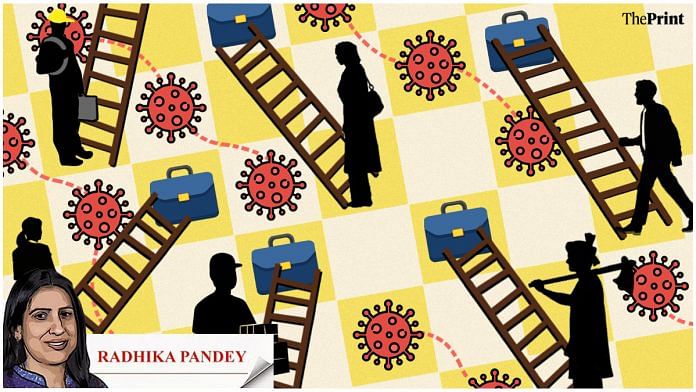I ndia’s unemployment rate dropped sharply to 6.4 per cent in September from 8.3 per cent in August. This was the lowest unemployment rate in the past four years. The fall in unemployment was seen across both rural and urban regions.
Alongside the decline in the unemployment rate, the labour force participation rate (LPR) inched up from 39.24 per cent in August to 39.32 per cent in September. An increasing LPR implies that more people are actively looking for jobs. Fall in unemployment rate amid an expansion of the labour force implies an increase in employment. While the increase in employment is encouraging, it is still below the pre-Covid levels.
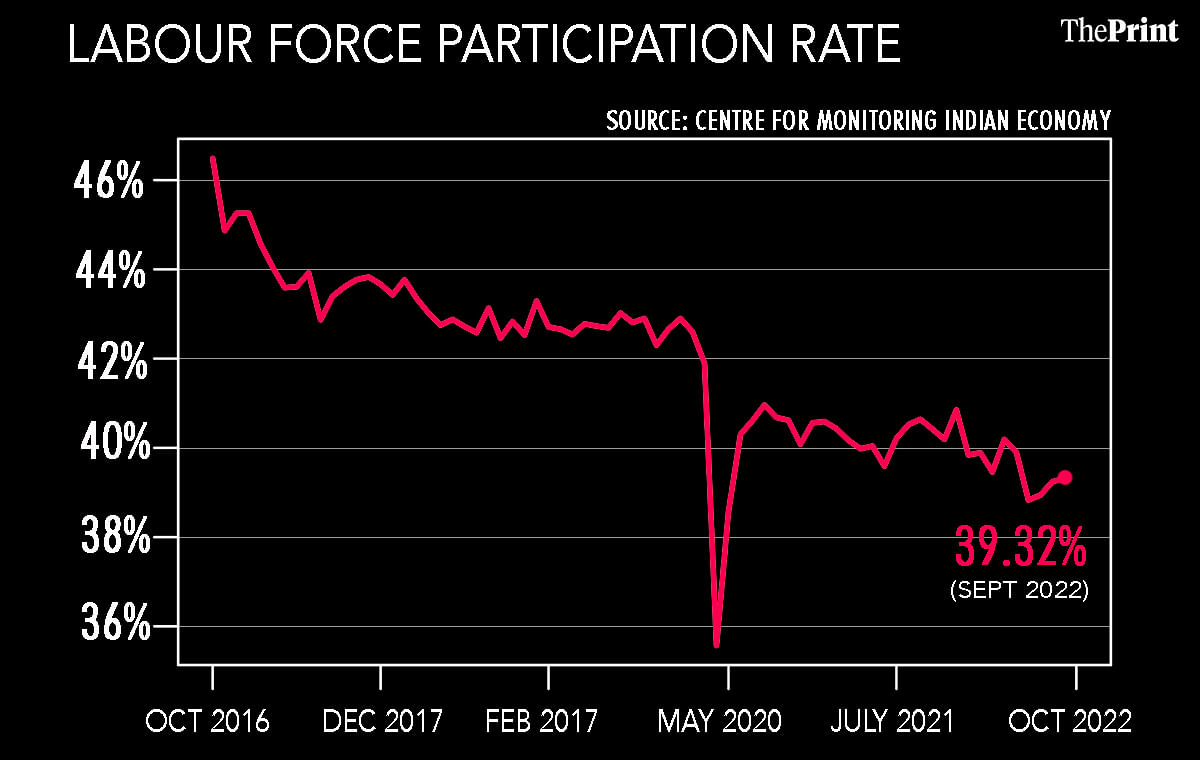
Employment in the non-farm sector is witnessing a churn. While the hotel and tourism sector and the manufacturing sector saw muted employment generation, sectors such as real estate and construction, education, IT, and delivery and retail segments are seen to be emerging as major employment generating sectors. The pandemic has also facilitated the shift towards a gig economy.
Also read: India’s falling forex reserve isn’t a worry for now, but RBI has a tightrope walk ahead
Employment rise in September
Employment in September rose to 404.2 million from 394.6 million in August. The increase in employment was led by rural India where employment increased from 270.3 million in August to 278.2 million in September. The increase in employment in rural areas was not led by agriculture but by manufacturing and construction activities. More than 7 million jobs were added in the construction sector in September.
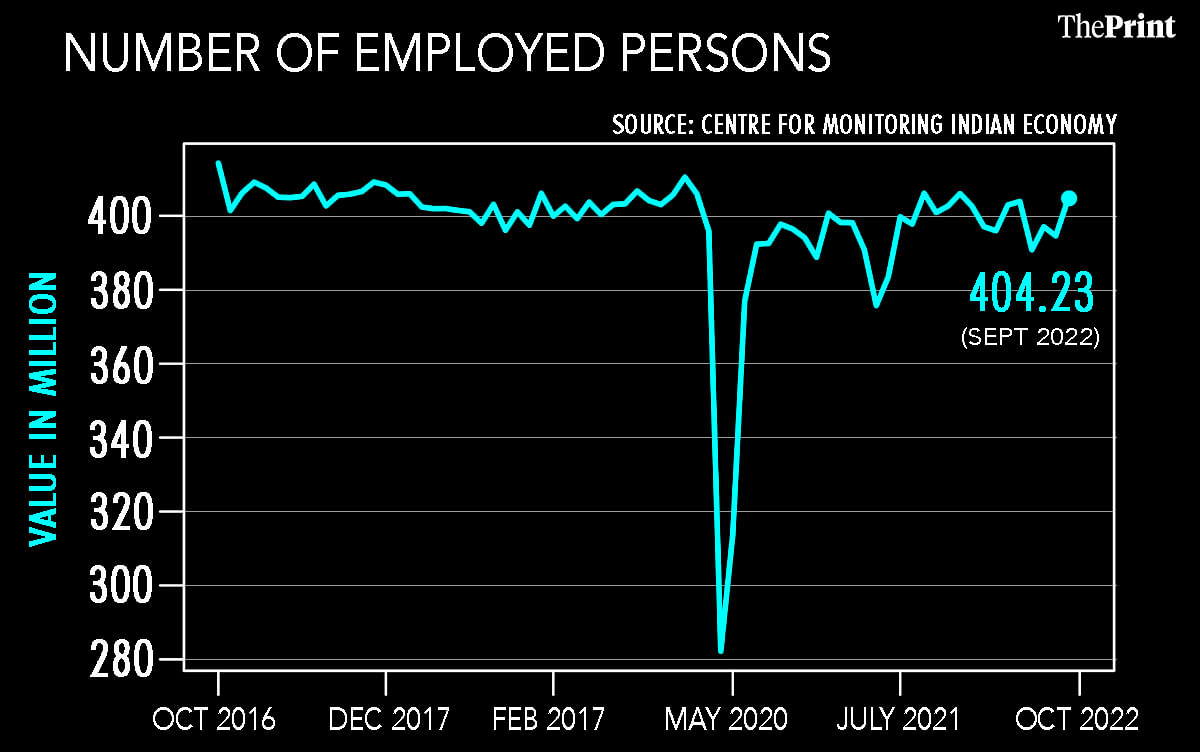
The increase in employment in the urban regions was relatively limited with an increase from 124.2 million in August to 125.9 million in September. Jobs were added in the services sector.
The Purchasing Managers’ Index (PMI) for the manufacturing sector, while signalling an expansion in manufacturing activity, also presented an encouraging picture on employment. According to the survey, employment rose at the quickest pace in three months in September as demand for orders and international sales remained strong.
Employment had fallen sharply to 282.2 million in April 2020 — the first month of the nationwide lockdown. For the year as a whole, employment dropped to 387.2 million in 2020-21. Since then, it has improved to 401.85 million in 2021-22 but is still below the pre-pandemic period. In 2019-20, 408.89 million persons were employed.
Official surveys on employment
To assess employment at The National Statistical Office launched the Periodic Labour Force Survey (PLFS) in April 2017. The surveys present an estimation of key employment and unemployment indicators such as Labour Force Participation Rate, Worker Population Ratio and Unemployment rate. The surveys were initially conducted annually for rural and urban areas. There is a gap of at least a year in the release of the annual PLFS report. The latest annual survey is for 2020-21 (July-June).
The annual survey for 2020-21 showed an improvement in the employment situation. While the headline numbers such as the unemployment rate eased to 4.2 per cent from 4.8 per cent, the rise in employment was mostly seen in low quality jobs.
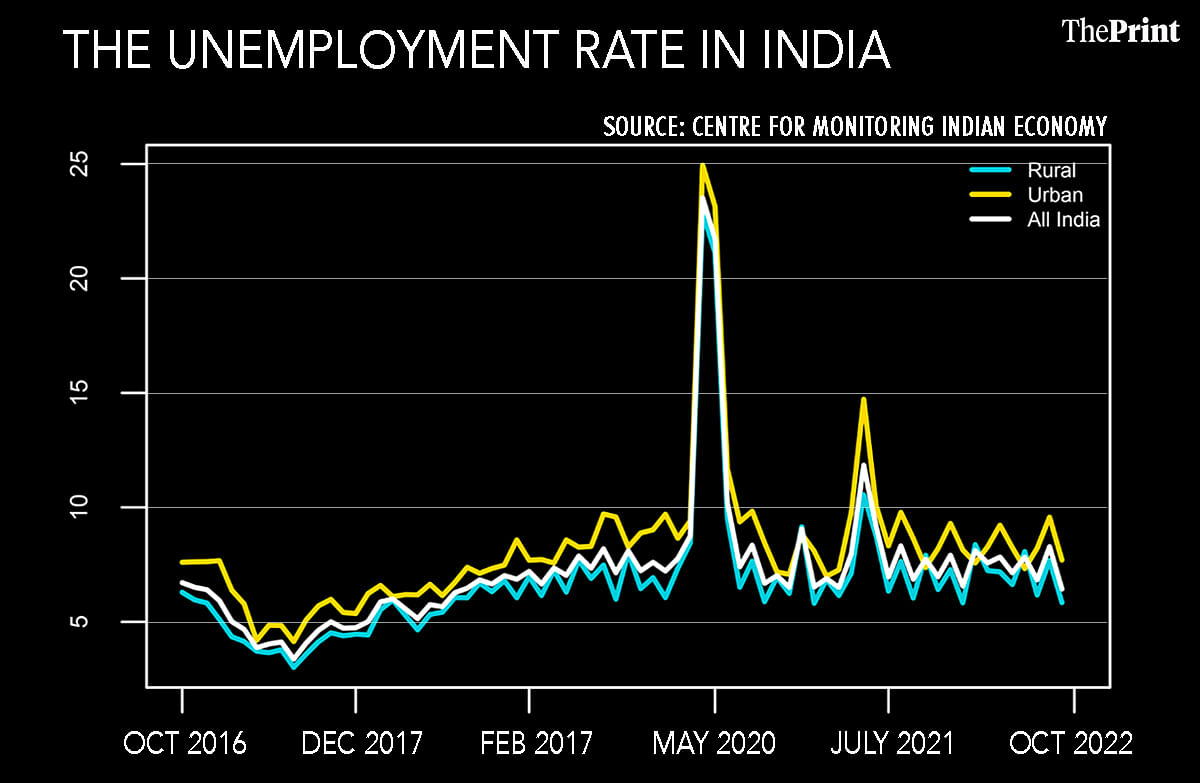
Employment in the unpaid self-employed category increased. Further, the share of the labour force engaged in agriculture showed a rise in the survey. The reverse migration of labour from cities to villages would have increased the pressure on agriculture to absorb the workers.
Since December 2018, quarterly PLFS for urban areas are being conducted. The quarterly survey for the period April-June 2020 showed a spike in the unemployment rate in urban areas to 20.9 per cent. As the lockdown was eased, the unemployment rate saw a decrease in the subsequent quarters. Unemployment rate has been showing a consistent decline. According to the latest survey for the quarter April-June 2022, the unemployment rate dipped to 7.6 per cent from 8.2 per cent in the previous quarter.
Also read: Bank credit has bounced back, but rising interest rates & inflation can be new hurdles
Quarterly Employment Survey (QES)
While PLFS presents a picture of employment from the supply side, the Quarterly Employment Survey (QES) released by the Ministry of Labour and Employment presents the scenario from the establishment side (demand side).
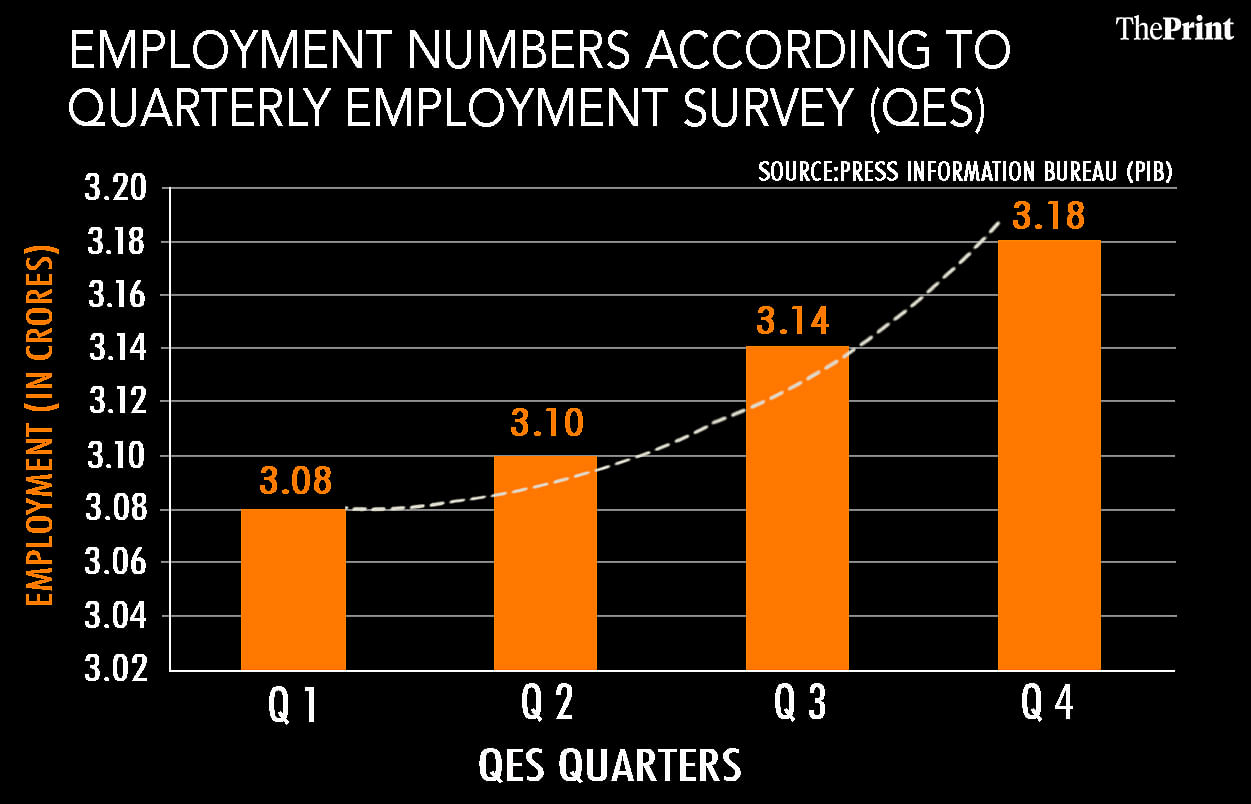
Graphic: Ramandeep Kaur | ThePrintThe survey estimates employment in establishments in nine non-farm sectors. For the January-March quarter, the survey shows an increase in employment to 3.18 crore workers from 3.14 crore workers in the previous quarter.
Work demanded under MGNREGA
Mahatma Gandhi National Rural Employment Guarantee Act, 2005 (MGNREGA) guarantees 100 days of wage employment in a financial year to every rural household whose adult members volunteer to do unskilled manual work. Demand for work spiked during the first wave of the pandemic. In June 2020, 44.79 million households sought work. Since then, though, there have been seasonal spikes, the demand for work has eased.
During Covid, MGNREGA provided much-needed employment and income to returning migrants and other vulnerable sections. To absorb the surge in demand for work during crises, the scheme should consider expanding areas of permissible work.
Latest data shows that 16.77 million households demanded work in September. This was 5 per cent more than the demand for work in the previous month. Sustained moderation in demand for work is necessary to ensure that the labour market is on the path to recovery.
Job creation by MSMEs
Micro, small and medium enterprises (MSMEs) play a crucial role in generating employment opportunities. While latest data on job creation by MSMEs is not available, according to the information given by the Minister of State for MSMEs, more than 93 lakh jobs were created in this sector in 2021-22. Focus on skill upgradation and enabling them to grow by reducing the compliance burden will bolster job creation in MSMEs.
Traditional jobs to gig economy
The pandemic has shifted the focus to gig economy jobs. While India had a large pool of informal gig workers, boost to digitisation and online platforms have facilitated the shift towards gig workers.
According to a recent survey, the gig economy can create upto 90 million jobs in the non-farm sector in the long-term. Right mix of policies that balances the flexibility offered by platforms while also ensuring social security of workers is the need of the hour.
Radhika Pandey is a consultant at National Institute of Public Finance and Policy.
Views are personal.
Also read: Why volatile food prices will keep the heat on India’s consumer inflation level this year


